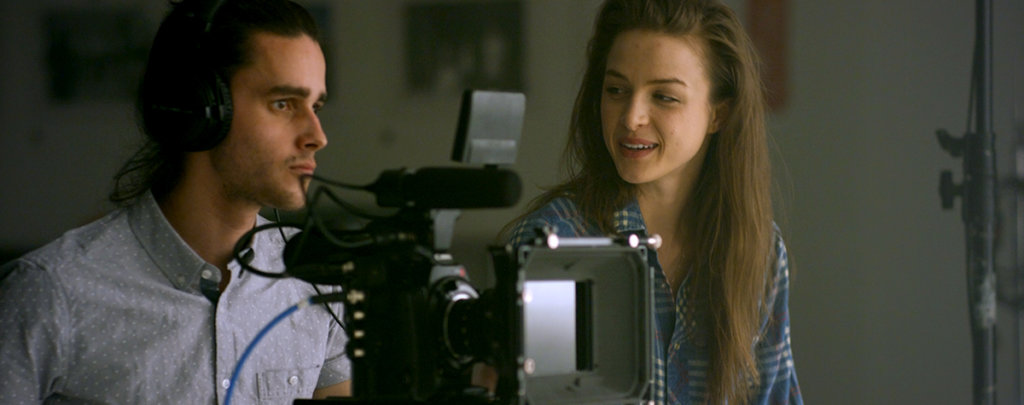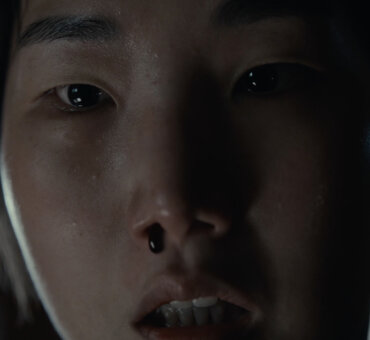On this blog, we’ve covered the art of receiving feedback from a general sense. But, this time around, we’re getting a bit more specific.
When you enter the professional realm of agencies, post-houses, in-house teams, or working as a freelancer, feedback takes on an entirely new shape. Now, that you’re collaborating with others, their feedback offers new insights you might not have encountered before. By embracing this spirit of honest teamwork, you can create content that checks professional boxes beyond the scope of anything you’ve done so far.
The feedback process is one of the most beautiful parts of a professional career, particularly in the creative world. When you’re working as a team, checking your egos at the door, and truly collaborating with your peers, it’s a symphony. So, in the interest of making beautiful music, let’s break down four elements of getting the most out of professional feedback.
1. You Are in Control
Those ancient philosophers thought a lot about self-control. Marcus Aurelius once said, “You have power over your mind—not outside events. Realize this, and you will find strength.” Boethius took it a step further: “Nothing is miserable unless you think it so; and on the other hand, nothing brings happiness unless you are content with it.”
When it comes to receiving feedback, you have to make one very important realization: You have no control over the person who is offering this feedback, and nor should you. We all have preconceived ideas of what we want to hear when it comes to feedback, but if we only hear our own ideas echoed back to us, then we aren’t improving.
As Boethius said, you have the ability to change reality by changing your perspective. Even if a feedback session surprises you with its ideas, you can change your perspective and this newfound information to the project’s advantage.

Always use your judgment. Some feedback may not be right for a given collaboration, but that doesn’t mean it doesn’t deserve your consideration. We cited Neil Gaiman in another article, but it’s worth citing him again: “When people tell you something’s wrong or doesn’t work for them, they are almost always right. When they tell you exactly what they think is wrong and how to fix it, they are almost always wrong.”
In other words, your collaborators may be feeling the symptoms of a problem, but they may also be misdiagnosing it. It’s up to you to get to the bottom of the issue. But, now you know that something is amiss—that information is a gift!
And once this conversation has started, you can start asking your own questions. This not only helps you get to the bottom of the mystery but also shows your collaborators that you value the project more than anything else. You’re willing to take this criticism, process it, and use it to move forward. Boethius would be proud.
2. Seek It Out
Let’s face it: some people are better at receiving feedback than others. It probably comes down to personality types, but it’s easy for some and incredibly difficult for others to tackle gracefully. For either group, though, we have a little secret to make it less painful: rip the bandaid off.

That’s right, instead of waiting for feedback, why not seek it out? This does a few things. First, it’ll change your mindset regarding the process, which is helpful for those who tend to struggle with receiving feedback. You’re getting what you want when you ask for feedback, which may take a bit of the sting out of it. Second, it tells the room that you’re open to collaboration. They can know that they’re allowed to open up and make suggestions—they may have hesitated to do so beforehand. Especially if you’re a creative director (or in a similar role), it can be intimidating for others to offer feedback to someone like yourself. By asking for it, you’re starting a valuable conversation.
The other side of this equation, which we hinted at in the previous point, alludes to your perspective of feedback in general. There are a few universal truths in life, and one of them is that you have to make mistakes to move forward in your career. And, guess what? You can’t know they’re mistakes unless someone tells you. We spoke with writer/director Dionne Edwards a while back, and she explained how valuable feedback is to her creative life:
I’ve always been good at writing characters and drawing from real life. What was bad about them was just the craft, the structure, and the things that you have to really learn. Back then, I didn’t really have people looking at them. Now I work really closely with a producer who looks at my work. I think it’s really important as a writer to get eyes on your work and get that feedback to push you to do better. I didn’t really have that back then; I was quite scared to show people my work. I wasn’t going deep enough with the characters. I wasn’t being honest with myself about what the characters would do and what they wouldn’t do.
It’s easy to develop blind spots. Most writers will tell you that nothing is harder than proofreading your own work because there’s just something in your brain that doesn’t want to admit failure or go back to the drawing board. As Dionne said, she already knew how to write characters, but she didn’t know how to put those pieces together, which she didn’t even realize until someone told her. As they say, knowing is half the battle.
3. It’s Not Your Project
Ego and creativity tend to be closely intertwined. It makes sense, too, because so much of yourself goes into a project that it can be hard not to treat it like your baby. But, in a professional creative environment, there’s something to consider, as editor Lucas Harger pointed out in our recent Instagram takeover:
You don’t deal with client notes. You work with client notes. You collaborate and you elevate. After all, it is their project and they’ve been working on this project considerably longer than you’ve been working on the project.
That may be a tough pill to swallow, but it’s true. The sooner you realize that someone is paying a lot of money, taking a lot of time, and has invested a lot of sweat equity into an idea, the easier it will be to receive feedback with grace. Think of it from their side. They’ve carried the idea from the beginning, and they want to take care of their idea. Do you think they’re really trying to be spiteful by offering constructive criticism? No, they’re protecting their baby.
4. Change Your Perspective
Before we tackle our next point, here’s a cautionary tale from Sundance Film Festival Programmer Drea Clarke:
I think people are often like, ‘This is my chance. I’ve got to do this now.’ There’s something to be said for taking advantage of the moment, but I’ve seen so many films and said, ‘If they had done table reads they would’ve figured out that this doesn’t make any sense.’ For a lot of first-timers, I’ll wish they’d spent more time developing their film or their ideas.
As we said in our earlier point, it’s easy to have blind spots in your own work. In Drea’s case, she’s seen it too many times and had to reject films because of it. But, notice one thing: she didn’t say the film was a bad idea; she just said it needed a little more time. That’s the difference between a brilliant idea and the thing a brilliant idea eventually becomes. Here’s how the Harvard Business Review describes it in their article on creative criticism:
. . . ideas, even if truly exceptional, often have major flaws. This is especially true for the most innovative ones because they dive into unexplored spaces. If someone uses the existence of a flaw to kill the idea, a great innovation may be missed.
And that’s the key. No great creation appeared out of nowhere. It took dozens of iterations, back-to-the-drawing-board moments, failures, and reinvention. The finished product is just the tip of the iceberg. The article continues:
To create breakthroughs, it is necessary to leverage the contrasts that come from critique instead of escaping them. In her research on the power of dissent, Charlan Nemeth (author of In Defense of Troublemakers) shows that debate and criticism do not inhibit ideas; rather, they stimulate them. Progress requires clashing and fusing — not compromising or postponing — different perspectives.
And that’s a great way to embrace the feedback process—to see it for what it truly is: progress. You can’t have creativity without problems, and you can’t know what the problem is until someone tells you. When you’re open to receiving feedback and criticism, you’re stepping out of your silo and opening your brain to the world, asking them to dip their toes in your universe. It’s rewarding, efficient, and dare we say, enjoyable. Sure, you can play an instrument by yourself, but the only way to create a symphony is by playing with others.
Images via Musicbed Films.







